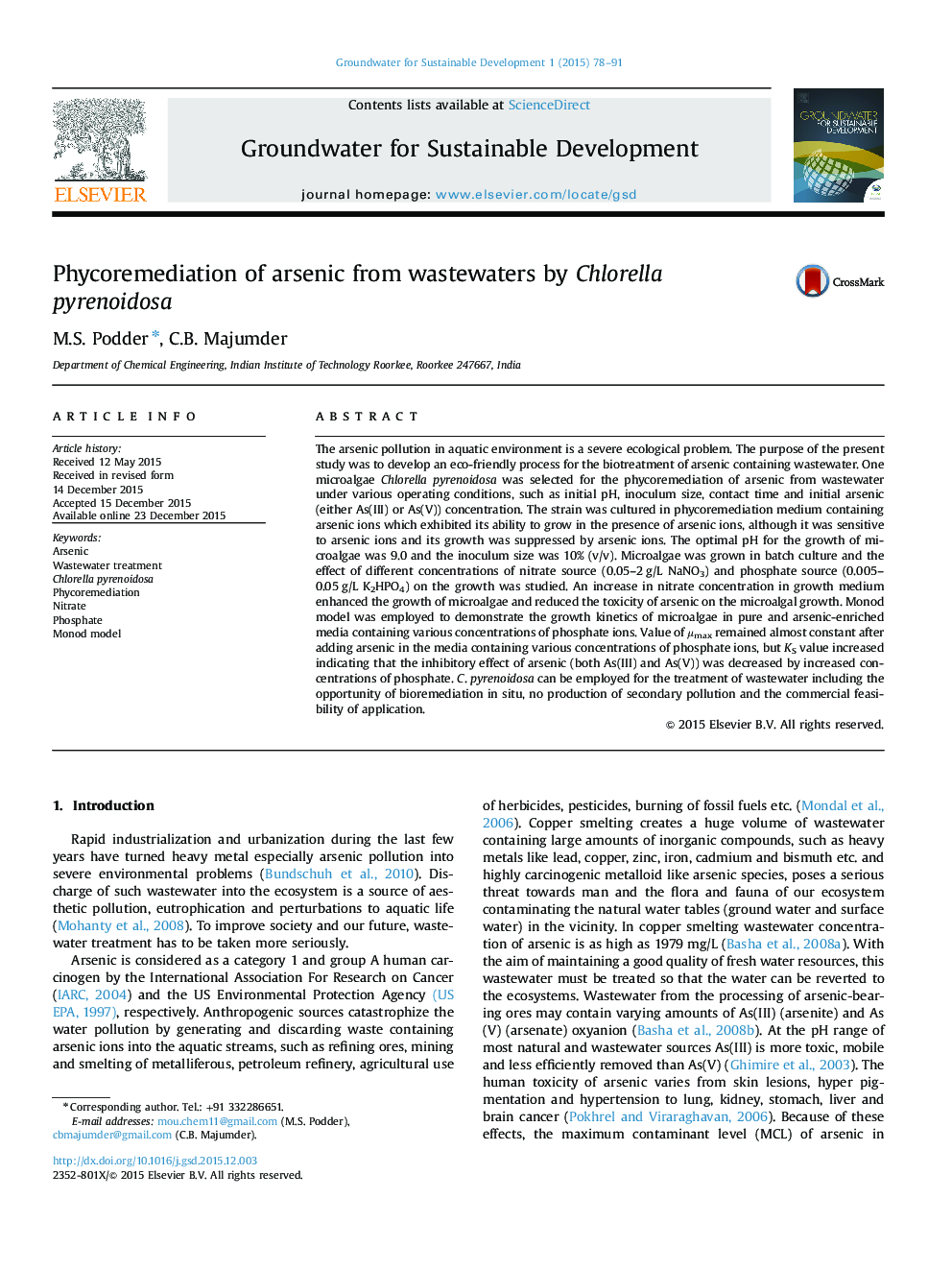| کد مقاله | کد نشریه | سال انتشار | مقاله انگلیسی | نسخه تمام متن |
|---|---|---|---|---|
| 4476275 | 1622680 | 2015 | 14 صفحه PDF | دانلود رایگان |

• Growth rate of Chorella pyrenoidosa under many process conditions were optimized.
• Phycoremediation process parameters using Chorella pyrenoidosa were optimized.
• A through kinetic study of microalgae in absence and presence of arsenic was done.
• Nitrate supply reduced inhibitory effects of arsenic on microalgal growth.
• Phosphate supply also decreased inhibitory effects of arsenic on microalgal growth.
The arsenic pollution in aquatic environment is a severe ecological problem. The purpose of the present study was to develop an eco-friendly process for the biotreatment of arsenic containing wastewater. One microalgae Chlorella pyrenoidosa was selected for the phycoremediation of arsenic from wastewater under various operating conditions, such as initial pH, inoculum size, contact time and initial arsenic (either As(III) or As(V)) concentration. The strain was cultured in phycoremediation medium containing arsenic ions which exhibited its ability to grow in the presence of arsenic ions, although it was sensitive to arsenic ions and its growth was suppressed by arsenic ions. The optimal pH for the growth of microalgae was 9.0 and the inoculum size was 10% (v/v). Microalgae was grown in batch culture and the effect of different concentrations of nitrate source (0.05–2 g/L NaNO3) and phosphate source (0.005–0.05 g/L K2HPO4) on the growth was studied. An increase in nitrate concentration in growth medium enhanced the growth of microalgae and reduced the toxicity of arsenic on the microalgal growth. Monod model was employed to demonstrate the growth kinetics of microalgae in pure and arsenic-enriched media containing various concentrations of phosphate ions. Value of µmax remained almost constant after adding arsenic in the media containing various concentrations of phosphate ions, but KS value increased indicating that the inhibitory effect of arsenic (both As(III) and As(V)) was decreased by increased concentrations of phosphate. C. pyrenoidosa can be employed for the treatment of wastewater including the opportunity of bioremediation in situ, no production of secondary pollution and the commercial feasibility of application.
Figure optionsDownload as PowerPoint slide
Journal: Groundwater for Sustainable Development - Volume 1, Issues 1–2, November–December 2015, Pages 78–91